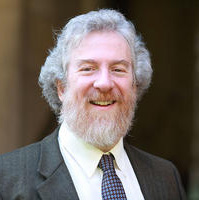
Welcome Guests—Visible and . . .
Sep 16, 2013 By Samuel Barth | Commentary | Sukkot
The sukkah is fragile and temporary, yet stands as a symbol of joy and celebration. Rabbi Reuven Hammer, in his commentary Or Hadash (Siddur Sim Shalom, 331), reminds us of a debate about the meaning of Leviticus 23:43 (“You shall live in Sukkot for seven days . . . in order that future generations will recall that I made the Israelite People dwell in Sukkot when I brought them out of Egypt”): “Rabbi Eliezer said that [these sukkot] were clouds of glory and Rabbi Akiba said they were actual huts (B. Sukkah 11b).”
Read More
Ne‘ilah: Final Closing, or Not Quite?
Sep 11, 2013 By Samuel Barth | Commentary | Yom Kippur
“P’tach lanu sha’ar” (Keep open the gate for us) are the words of a fragment of a piyyut attributed to Elazar Kallir (6th century, Land of Israel) [see the Rabbinical Assembly’s Mahzor Lev Shalem, 414].
Read More
Zichronot (Memories)
Sep 3, 2013 By Samuel Barth | Commentary | Rosh Hashanah
In the three great themes of Rosh Hashanah, the encounter with memories (zichronot) is nestled between the power of sovereignty (malchuyot) and the triumphant, enigmatic sound of the shofar (shofarot). Zichronot reminds us that each of us is remembered, that our acts are significant, that we come, each of us individually, into the divine presence. In spite of the massive processing power of our machines, there are problems that cannot be solved—even if every computer on earth were to be harnessed in parallel.
Read More
Selichot: Body, Soul . . . “Will You Hear My Voice?”
Aug 28, 2013 By Samuel Barth | Commentary
This coming Saturday night in (Ashkenazi) synagogues around the world, congregations gather for the beginning of Selichot, the prayers and poems that inspire and guide us to seek forgiveness. Many of us will spend hours in the coming weeks turning through pages of ancient (and modern) words, hearing melodies and chants that have served so well as the pathway for the journey of the soul.
Read More
“No’am Adonai” (the Beauty of Adonai): Psalm 27 and Elul
Aug 14, 2013 By Samuel Barth | Commentary
“[L]ahazot beno’am Adonai ul’vaker b’heychalo” (To gaze upon the beauty of Adonai, and to visit in God’s sanctuary) [Ps. 27:4]d
Read More
Healing of Body and Soul (Part 2)
Aug 7, 2013 By Samuel Barth | Commentary
If an anthropology student from the University of Mars were to attend a Shabbat morning service in an American Jewish synagogue, what kind of understanding about our real synagogue lives might emerge in the student’s term paper on the topic? The essay might suggest that announcements and kiddush are the most important parts of the experience because that is when the most people are present. The Martian professor (whose appearance we will not explore here) might urge the student to be more subtle and to observe closely the body language of the human participants to discern which parts of the service are most engaging and important to those present.
Read More
Healing of Body and Soul (Part 1)
Jul 31, 2013 By Samuel Barth | Commentary
In addition to the well-known mi sheberakh prayer for healing recited (or sung, in modern versions) during the Shabbat Torah Service, our liturgy engages with the theme of healing in the weekday ‘Amidah, in the blessing that begins, “Refa’einu Adonai veneraf’ei, hoshi’einu venivashe’a” (Heal us, Adonai, and we shall be healed, save us and we shall be saved). The blessing continues, asking for complete healing (refu’ah sh’leymah) for all among the People of Israel who are unwell.
Read More
Jerusalem
Jul 17, 2013 By Samuel Barth | Commentary | Tishah Be'av
As we emerge from our encounter with destruction and desolation on Tish’ah Be’Av, we approach Shabbat Nahamu, named for the opening words of the haftarah “Nahamu nahamu ami” (Be comforted, oh be comforted My people; Isa. 40:1). This becomes the week when we allow ourselves to encounter all the images of Jerusalem that are presented to us as signs and symbols of hope in our liturgy.
Read More


